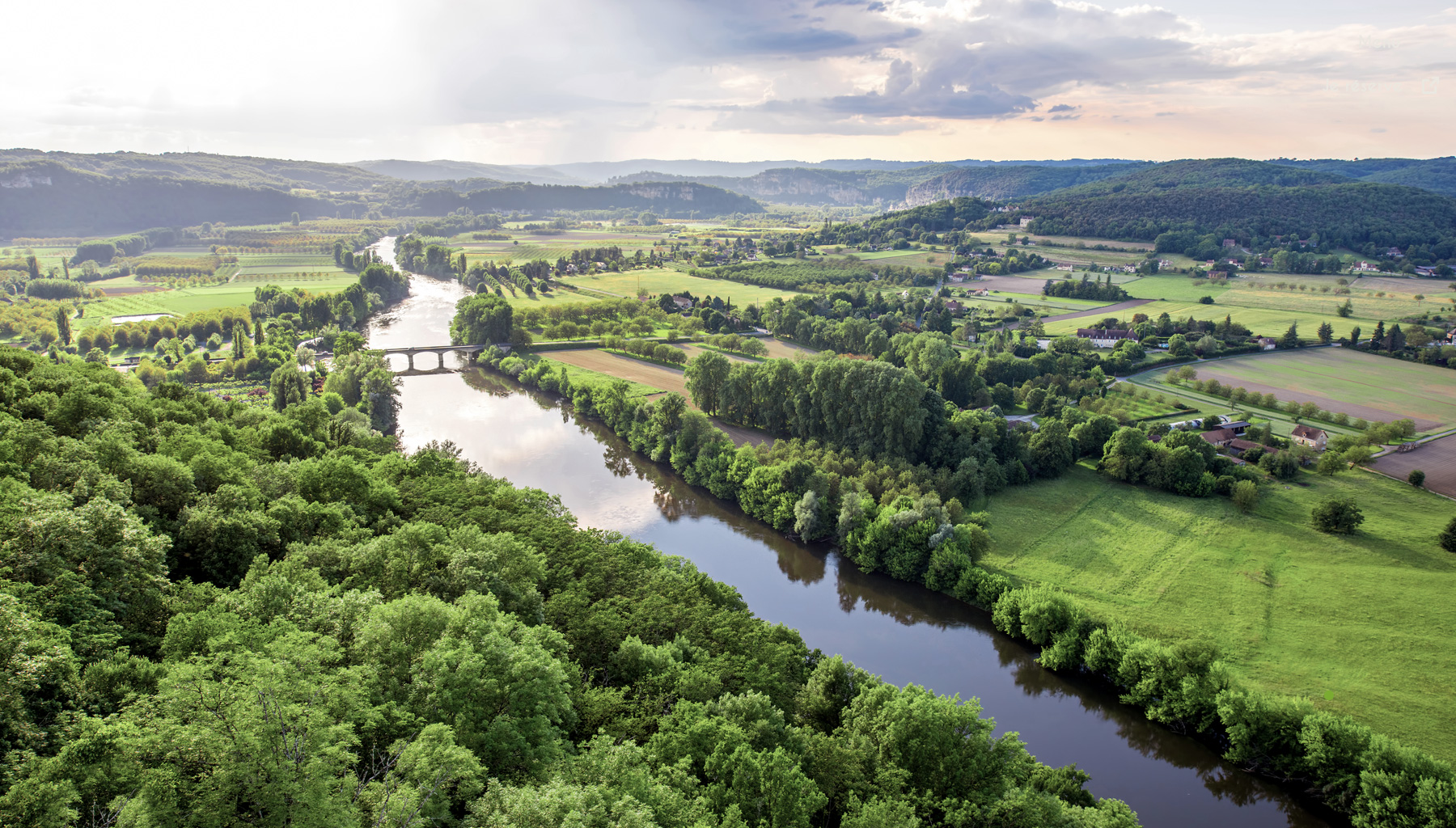
The Reignac stronghold is located on the banks of the Vézère river in the commune of Tursac, a stone’s throw from the imposing troglodytic shelter of the Roque Saint Christophe and 18km from the Dordogne campsite La Fage.

Cradle of Cro Magnon, the valley of Vézère abounds in prehistoric sites. Here, the first traces of habitation of what is today one of the best preserved castle-cliffs in France date back about 20,000 years. At that time it was a rock shelter on a terrace and overhanging shelters. Since that time, the site of Reignac has always been occupied and especially during the High Middle Ages, the remarkable medieval façade dating from 1386.
Reignac, which had become a powerful fortified house leaning against the cliff, was then the place where the lord and his family lived. At that time, the lord was a vassal of the lord of the Roque Saint-Christophe, the largest troglodytic city in Europe.
Its high position sheltered under the cliff, its defensive installations such as its 12 fire hydrants, its corbelled outbuildings and its stunners, as well as its caves located 40 meters higher, made it a particularly secure landmark.
The site is also rich in stories and mysteries. In the 12th century, Jaquemet de Reignac became lord of the place on his return from the Holy Land. This cruel man terrorizes the area. He arrests, tortures, executes and murders. He reinstated the right to marry, which had been abandoned by his ancestors, earning him the nickname “The Goat of Reignac”. The region regained its calm when he fled to Sicily, but not without murdering the second in command of the bishop of Périgueux while leaving, and while the authorities in Sarlat designated him as the main suspect in the murders and disappearances that had occurred since his return…
In the 14th century, the alchemist Leopold de Bonaventure is said to have discovered the formula for the elixir of eternal life in his laboratory on the upper terraces, hidden from view and far from the pyres reserved for this profession.
Today, Reignac is said to be inhabited by spirits, with a little luck you will be able to feel the soul of the knight in the iron mask…
The visit begins with an exhibition on prehistory located in the original rock shelter at the back of the building. Here you will be able to observe numerous flints cut for various uses, darts and thrusters as well as representations of prehistoric life scenes.
For the continuation of the visit, you will penetrate in the dwelling of this castle of Dordogne so particular. You will successively cross the great hall of honor, the kitchens with its ustensils of time, the dormitory, the room of the countess and some of the outfits, that of the “billy goat of Reignac”, the room of the great men, the room of weapons and its collection, the small chapel or the dungeons.
Each of these rooms is beautifully furnished and staged, so much so that the house still looks lived in today.
The visit continues with the upper part where the workshop of Leopold de Bonaventure the alchemist and the cave of the counterfeiters are located. This part is essentially defensive and benefits from a magnificent view on the whole valley.
On leaving the house, you can, if you wish, visit an exhibition on torture in the Middle Ages whose objective is to raise awareness of the practice of torture today in the world. This internationally renowned presentation is supported by humanitarian institutions. It has been presented in Mexico, the United States, Japan and various European capitals. It includes more than sixty authentic instruments of torture as well as engravings and paintings of the period presenting an overview of human cruelty.
This presentation is optional and included in the price.
From the campsite, it takes about 20 minutes to reach the fortified house of Reignac.
The visit lasts about two hours with the visit of the exhibition on the instruments of torture in the Middle Ages.
The site is open every day from February to November and during the Christmas vacations:
Individual rates range from €4.50 for a child between 5 and 13 years old to €9.50 for an adult, while students will only pay €6.50 for the visit.
To benefit from a reduced price, you can also take the tour as a group. If you are numerous enough, the rates will be 7€ per adult, 5,50€ per student, and between 3€ and 3,50€ per child depending on their level (primary or secondary).
In the heart of the Dordogne department, the amateurs of the prehistoric period will be able to visit the cave of Lascaux classified with the world heritage of UNESCO. Other more recent historical monuments also await you, including castles. Cultural vacations in New Aquitaine in the Dordogne Valley!
